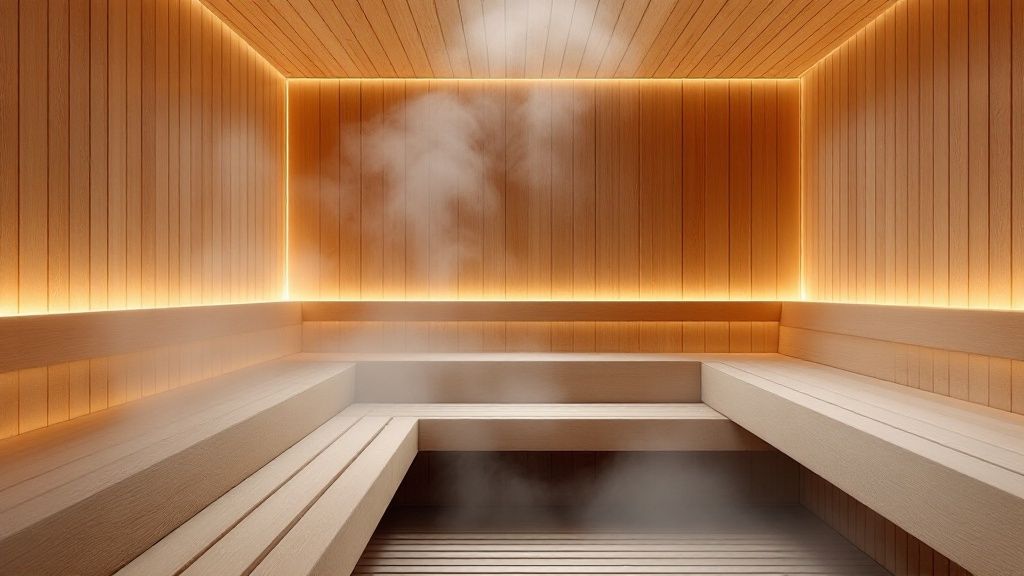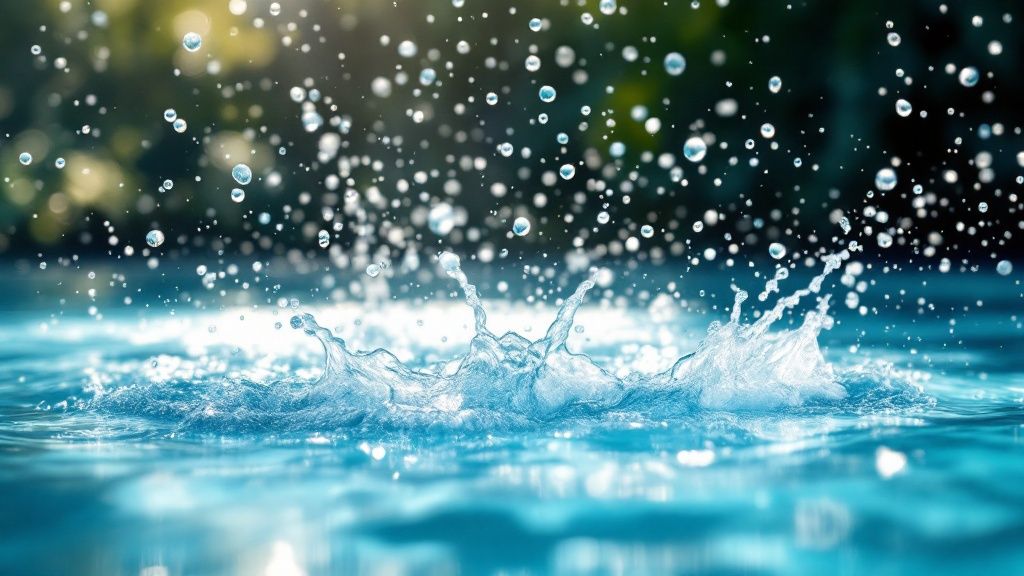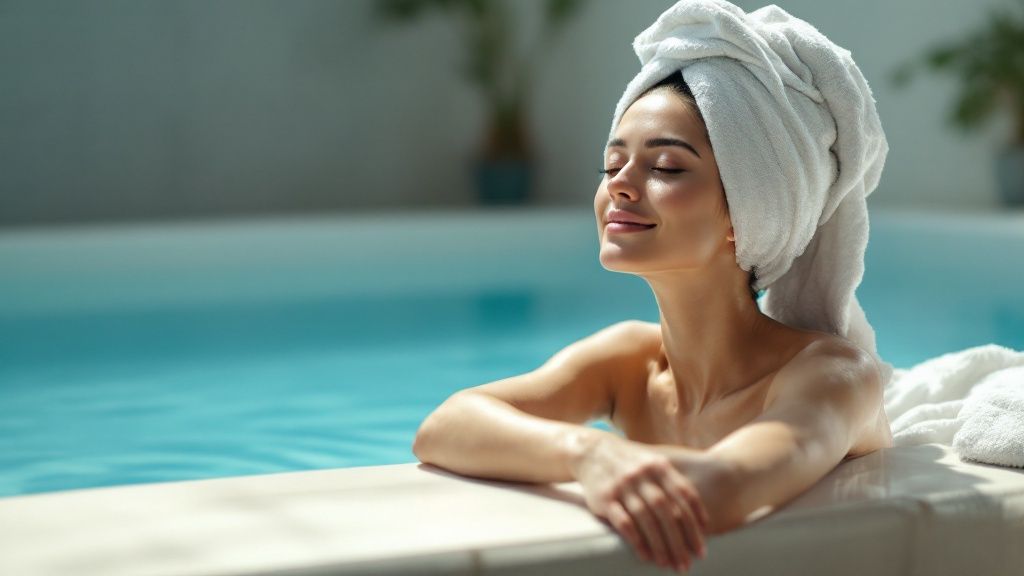Should I Cold Plunge after the Sauna?
- Sauna Tracker

- Mar 12
- 11 min read
The Nordic Revival: Ancient Practice, Modern Science

The invigorating practice of alternating sauna with cold plunges is experiencing a surge in popularity. More than just a trend, this Nordic Cycle is a time-honored tradition deeply embedded in Scandinavian cultures. It's a powerful interplay of heat and cold, offering a range of potential health benefits.
A Tradition of Wellness
For generations, Scandinavians have understood the profound effects of this ritual on body and mind. The Nordic Cycle is a holistic approach to well-being, going far beyond simple relaxation.
Regular sauna use coupled with cold plunges can significantly impact overall health. Studies suggest a 50% lower all-cause mortality rate for those practicing the cycle 4-7 times a week. A typical routine involves 15-20 minutes in the sauna followed by a 1-12 minute cold plunge. Learn more about the specific benefits of post-sauna cold plunges here.
This tradition is woven into the fabric of Nordic life, where the stark contrast between sauna heat and cold immersion is key to maintaining vitality. The practice now resonates with athletes, biohackers, and wellness enthusiasts worldwide seeking natural health optimization strategies. You might also be interested in exploring other sauna-related insights: Our sauna related blog posts.
Modern Science Meets Ancient Wisdom
Modern science is now exploring the mechanisms behind the Nordic Cycle’s benefits, confirming what Nordic cultures have long known. Research shows that this practice provides numerous physiological advantages. The intentional temperature contrast creates powerful cardiovascular responses, influencing circulation, inflammation, hormone regulation, and stress resilience.
Emerging research also indicates positive effects on mental clarity, focus, and mood stability.
Adapting the Nordic Cycle
Traditional Nordic practices offer a solid starting point, but modern approaches emphasize individualization. The duration of sauna sessions, cold plunge temperatures, and number of cycles can be tailored to personal needs, experience levels, and health goals.
This flexibility allows for a personalized experience while still harnessing the benefits of contrast therapy. This highlights the enduring relevance of this ancient practice, now supported by scientific research and continually evolving in the modern wellness sphere.
Inside Your Body: The Heat-to-Cold Transformation
That invigorating rush you feel stepping out of a hot sauna and into a cold plunge? It's more than just a quick thrill. It's a fascinating cascade of physiological changes happening within your body. Let's dive into the science behind this rapid temperature shift and explore how it impacts your cardiovascular system, hormones, and nervous system.
The Cardiovascular Dance
Imagine your blood vessels as a dynamic network responding to temperature cues. The sauna's heat initiates vasodilation, widening these vessels and increasing blood flow to the skin's surface. This promotes sweating and helps dissipate excess heat, similar to how your body cools during exercise.
The cold plunge, however, triggers the opposite reaction: vasoconstriction. Blood vessels narrow rapidly, redirecting blood flow from the extremities to your core for heat conservation. This rapid shift creates a vascular "pump," boosting circulation throughout your body.
Research has explored these cardiovascular changes. One study observed the effects of sauna followed by head-out ice water immersion. The results indicated a decrease in total peripheral resistance during the sauna, showcasing increased blood flow. Conversely, cold exposure increased peripheral resistance, which can strain the heart. Learn more about this study here.
A Hormonal Cascade
Beyond blood vessel dynamics, contrast therapy also triggers hormonal responses. The cold plunge stimulates the release of endorphins, those natural mood boosters responsible for the post-plunge euphoria many experience.
Furthermore, this heat-to-cold contrast activates your stress response system, impacting hormones like cortisol and adrenaline. Over time, this can enhance your resilience to stress, similar to how regular exercise improves physical fitness.
To illustrate the physiological changes, let's look at the following table:
Physiological Changes During Contrast Therapy
Comparison of body responses during different phases of sauna and cold plunge
Physiological Marker | During Sauna | During Cold Plunge | Recovery Phase |
|---|---|---|---|
Blood Vessels | Vasodilation (widening) | Vasoconstriction (narrowing) | Gradual return to normal |
Blood Flow | Increased to skin surface | Redirected to core | Redistributes evenly |
Heart Rate | Increases | Increases initially, then may decrease | Returns to normal |
Hormone Release | Minimal endorphin release | Significant endorphin release, cortisol and adrenaline fluctuations | Hormone levels rebalance |
Nervous System | Parasympathetic activation (relaxation) | Sympathetic activation ("fight-or-flight") | Returns to a balanced state |
This table summarizes the key physiological shifts your body experiences during contrast therapy, from the initial vasodilation in the sauna to the endorphin release during the cold plunge and the eventual return to homeostasis during recovery.
The Nervous System Shift
Your autonomic nervous system, managing involuntary bodily functions, plays a vital role in this heat-to-cold transformation. The sauna activates the parasympathetic nervous system, encouraging relaxation. Conversely, the cold plunge activates the sympathetic nervous system, responsible for the "fight-or-flight" response.
This alternating activation can improve the balance and responsiveness of your autonomic nervous system, leading to better stress regulation and enhanced overall well-being. You can explore more about sauna benefits on our sauna pages.
Recognizing Your Body's Signals
While contrast therapy offers many potential benefits, it's essential to listen to your body. Individual responses vary. Some might experience a stronger endorphin rush, while others might notice improved sleep. Understanding your unique reaction to these temperature changes is crucial for maximizing benefits and ensuring a safe and enjoyable experience.
Athletic Edge: Performance Benefits Beyond Recovery

From casual weekend workouts to the demands of elite competition, athletes of all levels are constantly searching for ways to improve performance and speed up recovery. The combination of sauna and cold plunge is gaining recognition as a powerful tool in this pursuit, offering benefits that extend beyond simple relaxation. For more information on related topics, check out our blog categories.
Targeting Inflammatory Pathways
Intense physical training often leads to inflammation, which can hinder both recovery and future performance. The heat and cold contrast of sauna followed by cold plunge can help address this. The sauna's heat increases blood flow, delivering essential nutrients and oxygen to tired muscles. The subsequent cold plunge then constricts blood vessels, reducing swelling and soreness. This combination promotes faster muscle recovery and less inflammation. Cold water immersion, in particular, offers significant benefits for athletes. A 2021 study on college soccer players highlighted the positive impact of cold water immersion therapy on post-sport recovery. Learn more about cold plunges here.
Accelerating Muscle Repair
Muscle damage is a natural part of strenuous workouts. However, efficient repair is crucial for minimizing downtime and maximizing gains. Contrast therapy, the alternating hot and cold provided by sauna and cold plunge, can assist in this process. The improved circulation facilitates the delivery of necessary building blocks for muscle regeneration. Furthermore, the cold plunge can actually reduce the breakdown of muscle tissue, leading to a faster return to peak physical condition. This allows athletes to resume training sooner and with less discomfort.
Enhancing Training Adaptations
Athletes continually push their boundaries, aiming for increased strength, endurance, and overall performance. Contrast therapy can play a supportive role in achieving these adaptations. By reducing muscle soreness and inflammation, and improving circulation, athletes can engage in more intense and more frequent training. This translates to greater training volume, a crucial factor in boosting performance. Over time, this consistent training stimulus can yield substantial improvements in athletic capabilities.
Optimizing Timing for Maximum Benefit
Timing is key to maximizing the benefits of contrast therapy for athletic performance. The optimal window for post-workout recovery is typically within 30 minutes to an hour after training. This allows for immediate action on inflammatory pathways and jumpstarts muscle repair. For athletes with multiple training sessions per day, contrast therapy between sessions can enhance recovery and prepare the body for the next workout. Even for those who exercise less frequently, incorporating this practice can significantly decrease delayed onset muscle soreness and improve overall recovery.
Mental Clarity: The Cognitive Reset Button

Beyond the physical perks, the practice of a cold plunge after a sauna offers a significant mental refresh. Many people describe the experience as a powerful reset, positively impacting brain function, stress resilience, and emotional regulation. This controlled temperature fluctuation can lead to noticeable improvements in cognitive function and a greater sense of overall well-being.
A Neurobiological Dive
The extreme temperatures of contrast therapy affect the nervous system in fascinating ways. The cold plunge, in particular, triggers a surge of norepinephrine, a neurotransmitter linked to alertness and focus. This can result in a feeling of heightened awareness and improved cognitive function immediately after the plunge. The cold shock also activates the prefrontal cortex, the brain's control center for planning and decision-making. This activation strengthens mental resilience, bolstering your ability to handle daily stressors. You might be interested in: Our sauna related blog posts for more related content.
Stress Resilience and Emotional Regulation
The controlled stress of moving between extreme hot and cold effectively "trains" your nervous system. Repeated exposure to these controlled stressors can improve your ability to manage everyday challenges more efficiently. It’s like building mental "muscle" through repeated, manageable stress exposure. Regular practitioners often report a decrease in anxiety and an improved ability to navigate stressful situations. This improved stress response can contribute to greater emotional stability and a pervasive sense of calm.
Enhancing Sleep Architecture
Quality sleep is crucial for cognitive function and overall wellness. Many individuals find their sleep improves after contrast therapy sessions. The cold plunge, in particular, seems to promote deeper, more restorative sleep. This is likely due to the activation of the parasympathetic nervous system, which calms the body and mind. The improved sleep quality translates to better cognitive performance, including enhanced memory, focus, and creativity.
The Meditative Aspect
Beyond the neurobiological changes, contrast therapy has a meditative quality. The intense sensations draw your attention to the present moment, encouraging mindfulness. This meditative aspect further contributes to mental clarity and emotional balance. By focusing on your breath and bodily sensations during both the sauna and cold plunge, you can deepen this meditative state and maximize the mental benefits. This focus cultivates presence and a sense of inner peace. The combination of heat and cold can also create a feeling of grounding and connection to your body.
Maximizing Mental Benefits
While the standard practice of cold plunge after sauna already provides mental benefits, certain techniques can enhance the experience further. Conscious breathing exercises during the hot and cold phases amplify the meditative aspect. Focusing on slow, deep breaths can help regulate the nervous system and promote relaxation. Visualization techniques can be used during the sauna session to enhance relaxation and reduce stress. During the cold plunge, visualization can help to build focus and mental fortitude. By incorporating these techniques, you can personalize your contrast therapy experience and optimize its positive impact on your mental and emotional well-being.
Building Your Personal Protocol: From Novice to Master
Ready to experience the invigorating benefits of a cold plunge after your sauna session? A personalized contrast therapy protocol is essential for maximizing these benefits while ensuring your safety. This guide will take you from beginner to seasoned pro.
Starting Slow and Steady: A Beginner's Guide
New to the post-sauna cold plunge? Start gradually. Just like a new exercise program, easing into the temperature changes is vital. Begin with shorter sauna sessions of 10-15 minutes at a moderate temperature of 150-170°F (65-77°C).
Follow this with a quick cold plunge of 30-60 seconds at 50-60°F (10-15°C). This allows your body to adjust to the temperature shifts without stress. As you acclimate, gradually increase your sauna time and lower the cold plunge temperature.
Leveling Up: Intermediate and Advanced Practices
Once you're comfortable with the beginner routine, you can move to intermediate and advanced levels. Increase your sauna sessions to 15-20 minutes at 170-190°F (77-88°C). Your cold plunge can be extended to 1-3 minutes at 40-50°F (4-10°C).
Advanced practitioners may explore longer sauna sessions and colder plunges. However, always listen to your body. Never push yourself beyond your comfort zone, as this can be harmful.
Fine-Tuning Your Approach: Breathing and Timing
Temperature and duration aren't the only factors. Controlled breathing in both the sauna and cold plunge can improve relaxation and your body's response. Deep, slow breaths in the sauna promote relaxation. Focused breathing during the plunge helps manage the initial shock.
Timing is also key. Aim to plunge immediately after exiting the sauna to maximize the contrast effect.
Equipment Options: From DIY to Dedicated Setups
You don't need expensive equipment. While dedicated cold plunge tubs offer precise temperature control, DIY solutions work too. A cold shower, a bathtub with cold water and ice, or even a cool natural body of water (if safe and accessible) offer similar benefits. Choose what suits your lifestyle. Maintaining proper hygiene and water quality is crucial.
Personalized Protocol: Listening to Your Body
The most effective protocol is tailored to you. Factors like age, fitness, and health goals all play a role. Pay attention to your body’s signals and adjust accordingly. If you experience discomfort, stop immediately and consult a healthcare professional.
Troubleshooting Plateaus: Overcoming Challenges
Hitting a plateau? It's normal. To overcome it, adjust your protocol. Try varying the temperature difference, experimenting with durations, or incorporating new breathing techniques. If you consistently struggle, consult a healthcare professional or an experienced contrast therapy practitioner.
To help guide you, here's a sample protocol:
Contrast Therapy Protocol Guide
Recommended temperatures, durations, and progression paths for different experience levels
Experience Level | Sauna Temperature (°F/°C) | Sauna Duration (minutes) | Cold Plunge Temperature (°F/°C) | Cold Plunge Duration (seconds/minutes) | Rounds |
|---|---|---|---|---|---|
Beginner | 150-170 / 65-77 | 10-15 | 50-60 / 10-15 | 30-60 seconds | 1-2 |
Intermediate | 170-190 / 77-88 | 15-20 | 40-50 / 4-10 | 1-3 minutes | 2-3 |
Advanced | 190-210 / 88-99 | 20-25 | 32-40 / 0-4 | 2-5 minutes | 3-4 |
This table is a general guideline. Remember to personalize it and prioritize safety. By building your own protocol, you can unlock the full potential of contrast therapy for enhanced recovery, mental clarity, and overall well-being.
Safety First: When to Proceed, Pause, or Pass
Cold plunges after sauna sessions offer many potential benefits, but responsible practice requires understanding safety precautions. This section outlines vital guidelines for navigating contrast therapy safely and effectively.
Assessing Your Readiness: Medical Clearance and Contraindications
Before starting cold plunge after sauna therapy, it's crucial to assess your health. Certain pre-existing conditions may require medical clearance or even prevent participation. For instance, individuals with cardiovascular conditions like high blood pressure or arrhythmias should consult their doctor before beginning contrast therapy. This precaution ensures the practice aligns with your health needs and minimizes potential risks. You might be interested in our sitemap for more information on sauna and health.
Similarly, conditions like Raynaud's disease or peripheral neuropathy, which affect circulation in the extremities, may require modifications or pose contraindications to cold exposure. Prioritizing safety and making informed decisions in collaboration with your healthcare provider is always best.
Tailoring Your Approach: Modifications for Specific Populations
Contrast therapy can be adapted to various individual circumstances. Pregnancy, for example, requires specific modifications to both sauna and cold plunge protocols. Lower temperatures and shorter durations are generally recommended to minimize stress on both the mother and baby. This approach allows pregnant individuals to experience potential benefits safely.
Individuals taking certain medications should also discuss potential interactions with their doctor. Medications affecting blood pressure or heart rate may require adjustments to the contrast therapy protocol. This personalized approach ensures the practice complements existing medical regimens and optimizes safety.
Proper Entry and Exit: Minimizing Cardiovascular Stress
The transition between the hot sauna and the cold plunge requires careful attention. Sudden temperature changes can stress the cardiovascular system. To minimize this, gradual entry and exit are crucial. Stepping into the cold plunge slowly allows the body to acclimate gradually, reducing the shock to the system. Similarly, after the cold plunge, gradual rewarming is essential to avoid sudden spikes in heart rate and blood pressure.
While 'cold plunge after sauna' is gaining modern popularity, contrasting temperatures have a long history in various cultures, though not directly tied to historical events in the Florida Keys. These islands, rich in maritime history, don't specifically feature in sauna or cold plunge traditions. Learn more about the Florida Keys' maritime history here.
Monitoring and Recognizing Warning Signs
During contrast therapy, self-monitoring is vital. Pay attention to your body’s signals. Dizziness, lightheadedness, or chest pain indicate you should stop immediately and seek medical attention if necessary. These warning signs shouldn't be ignored and warrant prompt action. Having a partner present during sessions can offer added safety and support, especially initially or when exploring advanced protocols.
Practical Monitoring Techniques
Practical monitoring methods include regularly checking your heart rate and observing your breathing. A significant heart rate spike or drop may signal the need to adjust your protocol or end the session. Similarly, difficulty breathing or feeling overly breathless indicates the temperature contrast may be too extreme for your current tolerance.
By understanding potential risks and adopting these safety precautions, you can confidently incorporate cold plunge after sauna therapy into your wellness routine. Prioritizing safety empowers you to harness the potential benefits while minimizing adverse effects.
Ready to elevate your sauna experience and track your progress? Sauna Tracker is the perfect companion. Download the app today and start optimizing your sauna sessions! Sauna Tracker provides tools to monitor key metrics, personalize your protocol, and achieve your wellness goals.

.png)
